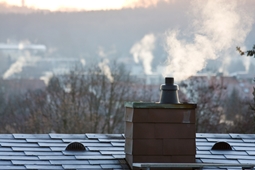Protect Your Home and Workplace from Carbon Monoxide Poisoning
Carbon monoxide (CO) is a highly toxic and poisonous gas. It is colorless, odorless and tasteless so it is hard to detect. Since there are no warning signs specific to CO, one may not be aware of the presence of the gas in their home and workplace.
Because of this silent danger, it is important to be aware of prevention methods, detection, and signs and symptoms of CO poisoning to lessen the chances of the gas being present.
To Prevent CO Poisoning, You Should:
-
 Know the location of equipment and appliances, such as gas or kerosene heaters, that could produce CO gases.
Know the location of equipment and appliances, such as gas or kerosene heaters, that could produce CO gases. -
Ventilate any areas where CO may be accumulating.
-
Only use home and workplace-approved heating equipment.
Detection is Essential For Ensuring Safety
-
Make sure CO detectors are properly installed.
-
Some detectors require a constant supply of power and others are battery powered.
-
Know which device is in use and check that it is in a safe place.
-
A proper place for the CO detector is five feet above the ground or on the ceiling of each room of the home or building. Some CO detectors are available as system-connected, monitored devices. System-connected detectors, which can be wired to either a security or fire panel, are monitored by a central station.
-
Update and check each detector or system yearly to be sure it is working properly. The average lifespan of a non-system detector is about two years.
Signs and Symptoms
Carbon monoxide is harmful when breathed because it displaces oxygen in the blood and deprives the heart, brain and other vital organs of clean oxygen. Large amounts of CO can overcome a person in minutes without warning, causing loss of consciousness and suffocation.
Initial symptoms could include:
-
Headache
-
Exhaustion
-
Nausea
-
Dizziness
-
Rapid breathing
-
Confusion
-
Weakness
If someone is experiencing signs of CO poisoning, get out of the area and get fresh air. Seek prompt medical attention once you are away from the source.
For more information on CO poisoning…
Centers for Disease Control and Prevention: www.cdc.gov/co
Industrial Accident Prevention Association: www.iapa.ca/pdf/carbon_monoxide_feb2003.pdf




















